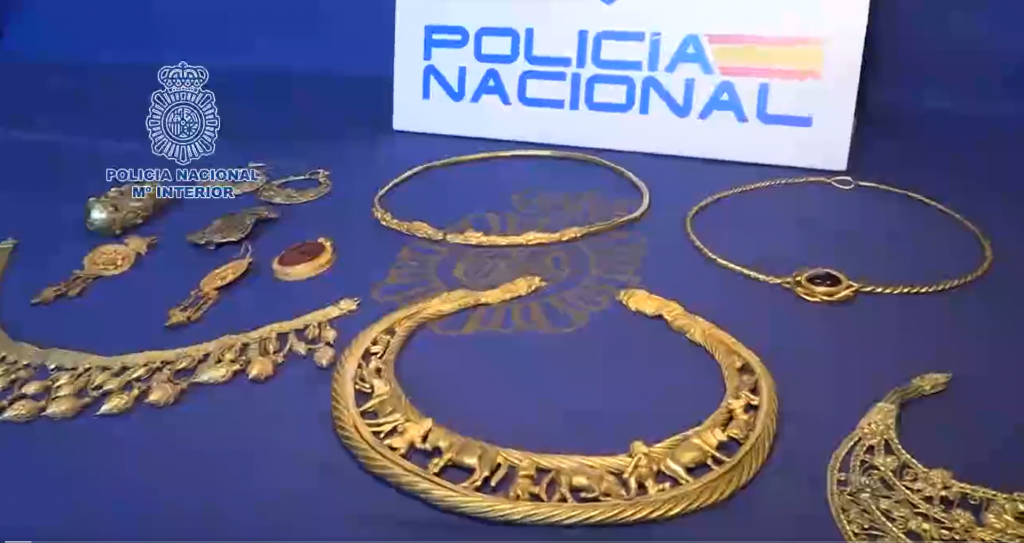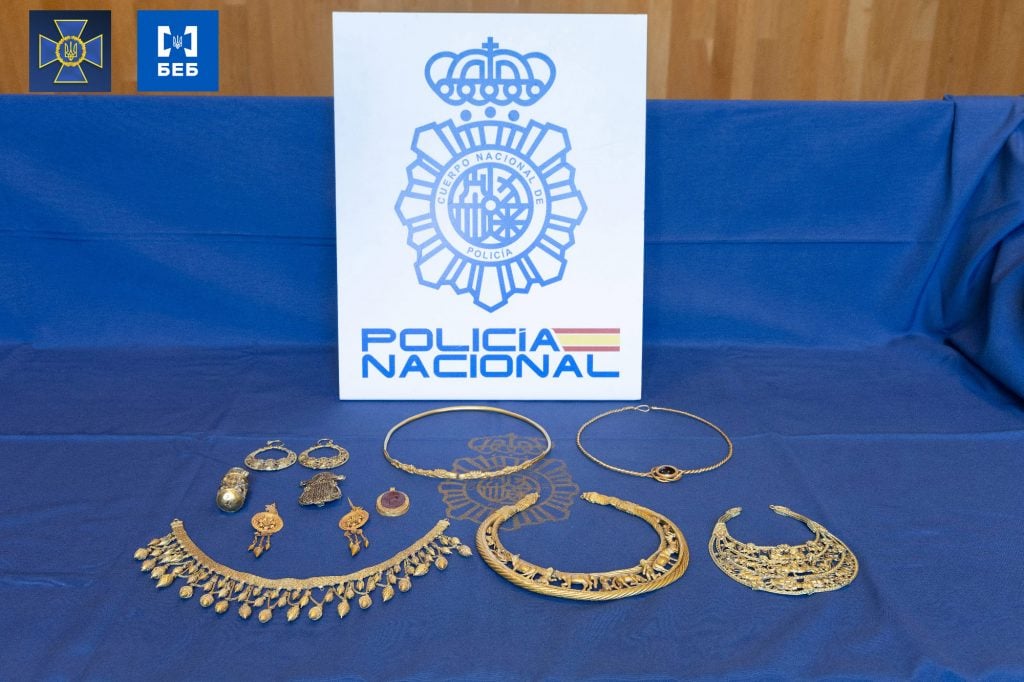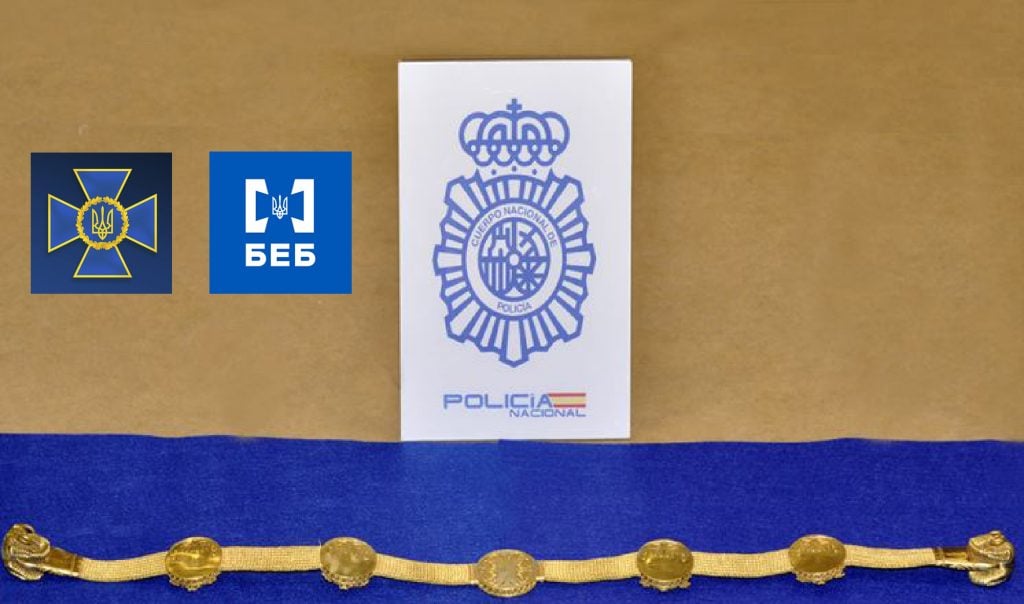Crime
Police in Spain Seized Greco-Scythian Artifacts That Were Allegedly Stolen From Ukraine—But Experts Doubt Their Authenticity
The authorities say the total value of the objects exceeds $63 million.

The authorities say the total value of the objects exceeds $63 million.

Adam Schrader

Spanish police have seized alleged Greco-Scythian gold artifacts belonging to Ukraine that could be worth tens of millions of dollars, if they are real.
Spain’s National Police and the Security Service of Ukraine, the country’s main intelligence agency, said in a statement on October 23 that officers had conducted an operation in which 11 pieces of gold valued at more than €60 million ($63 million) belonging Ukraine were seized in Madrid.
Dated back to the 4th and 8th centuries B.C.E., the gold items were held and exhibited in museums in Kyiv between 2009 and 2013. They were determined to have left Ukraine illegally before May 2016, after Russia annexed Crimea but before the current conflict, investigators said.
“The jewelry ended up in the possession of [an] Orthodox priest who, in collusion with a second individual of the same nationality and the help of third parties, falsified documents that created the origin of the cultural property and accredited its ownership,” police said.

Spanish police have seized alleged Greco-Scythian gold artifacts belonging to Ukraine that could be worth tens of millions of dollars, if they are real. Photo courtesy of Spain’s National Police
Spanish police said the first investigations began when the agents learned that the gold jewelry was being sold by a Ukrainian citizen living in Madrid. The first of the gold artifacts, a belt with ram heads, was seized in 2021 after it was privately sold.
Now, five people have been arrested, three of Spanish nationality and two of Ukrainian nationality, on allegations of money laundering. Police have also seized the 10 other items.
Police branded the operating as the “dismantling a criminal network” dedicated to the illicit trafficking of cultural property from Ukraine.
“These are pieces that cannot be sold through the usual legal channels, such as auction rooms,” its statement read. “For this reason, the jewels were incorporated into the capital of different commercial companies, created specifically, in order to give them a legal appearance and thus facilitate their commercialization by a group of investors.”

Spanish police have seized alleged Greco-Scythian gold artifacts belonging to Ukraine that could be worth tens of millions of dollars, if they are real. Photo courtesy of Spain’s National Police
However, two experts who spoke to The New York Times have now suggested the gold could be fake. According to the Times, it was unclear if those involved in the scheme were aware of the possibility the items could be fake.
Leonid Babenko, an archaeologist at the M.F. Sumtsov Kharkiv Historical Museum in Kharkiv, told the newspaper the items were “clumsy fakes.”
Caspar Meyer, an archaeologist who has written a book on Greco-Scythian art, told the Times he remembers seeing the gold items in a church building in Kyiv in 2011, thinking they were “modern imitations.” Regardless, he added, the items should be returned to Ukraine for proper study.
“If they were genuine, they would be [valued] probably more than 60 million because there is so little of this material, it’s priceless,” Meyer said.
Meyer said “there is no precedent on the art market to value something like this” because there are only about 30 to 40 major Greco-Scythian artifacts that have been recovered because they are usually buried more than 60 feet underground and difficult to excavate.
“There is actually very, very little material of this in private hands,” Meyer said. “It’s almost all in big museums.”
More Trending Stories:
Four ‘Excellently Preserved’ Ancient Roman Swords Have Been Found in the Judean Desert